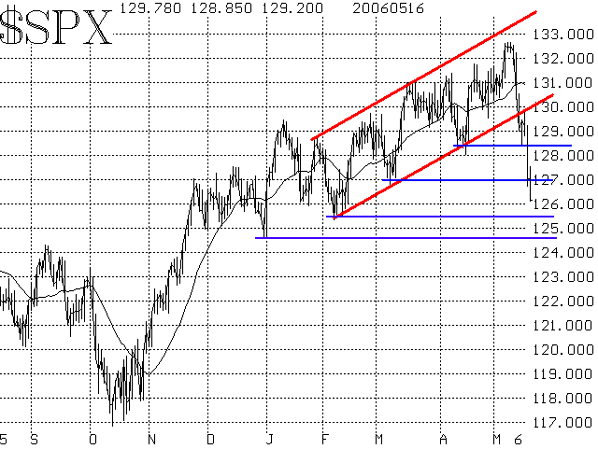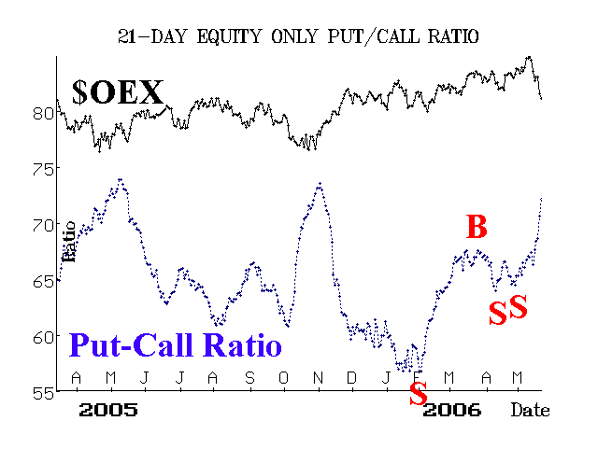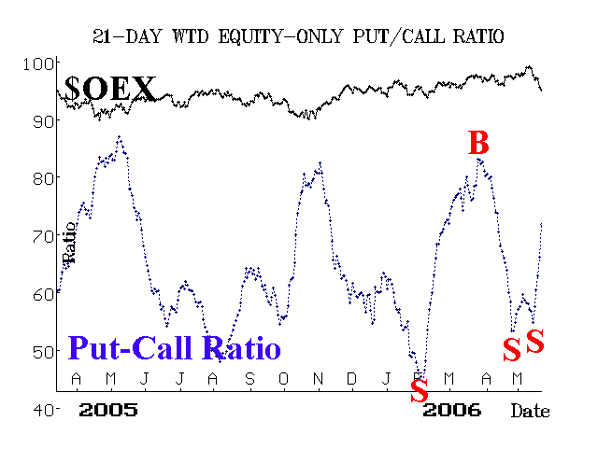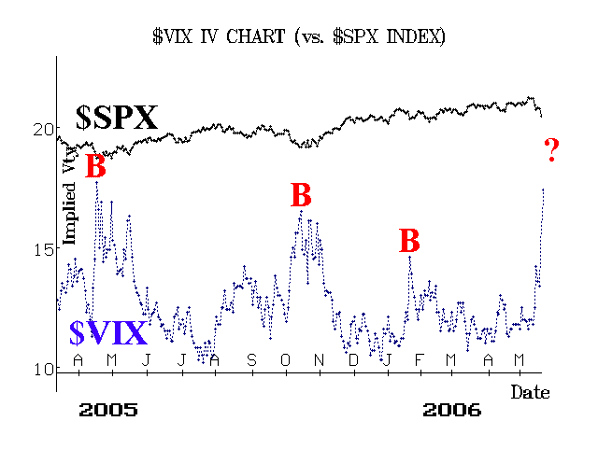Things have changed dramatically in the stock market -- not only from the fact that prices have declined, but also in the way that traders are reacting to these price declines. For the last six months, any modest decline resulting in a slight oversold condition was fuel for the "buy the dip" crowd to take prices strongly higher again. That is no longer the case. Even though the market is deeply oversold -- rivaling the deepest oversold levels of the past couple of years -- the bulls can't get a rally together. That is a very negative sign. In the short term, the market is oversold, as we'll point out. However, remember that "oversold does not mean buy."
$SPX has broken down through most of the support levels that had existed in recent months. The uptrend channel has been violated, and the April bottoms failed to stem the decline. Now, the March bottom ($SPX 1270) is history, too. The next stop appears to be the yearly lows at 1245-1250. If that gives way, the elusive 9% correction may finally be upon us ($SPX would have to decline to roughly 1207 to have fallen 9% from its recent highs at 1327). The moving averages are rolling over as well, so all of this adds up to an intermediate-term sell signal. On the very short term, though, $SPX has fallen "too far" below its 20-day moving average and is due for an oversold bounce.

Equity-only put-call ratios are on sell signals, too. They have been on these for a couple of weeks now, but this latest action has confirmed those sell signals with a vengeance. There is some indication of an oversold condition here, too. In three of the last four days, the single-day standard equity-only put-call ratios have been 96, 99, and 102. These are extremely high numbers, indicating that many traders are bearish. Since this is a contrarian indicator, it is saying that a short-term bounce could be at hand. But from an intermediate-term perspective, these ratios are bearish and will remain so until they roll over and begin to head downward.

Breadth has been abysmal. However, breadth needs to improve considerably to generate true buy signals.

Finally, volatility ($VIX) has skyrocketed. At first it looked like it might have formed a spike peak at 15 last Friday. In the last six months, that would have been a buy signal. But not any longer, as it has now shot up to 17. Clearly, it is getting ahead of itself and is thus another oversold indicator. But the more ominous fact is that $VIX may have established an uptrend (even if it pulls back some), which is bearish from a longer-term view.

In summary, this massive oversold condition should be able to produce a short-term rally soon, although one could have said that at any time in the last two days and none has been forthcoming. From a longer-term view, major technical and emotional (psychological) damage has been done. That won't be repaired so easily. At a bare minimum, the market is going to have to regroup and set up true buy signals. It won't just bounce off a "V" bottom and return to its optimistic, bullish ways.
Lawrence G. McMillan is the author of two best selling books on options, including Options as a Strategic Investment, recognized as essential resources for any serious option trader's library. Sign up today and take an extra 10% off tuition for Larry's 2-Day Intensive Options Seminar on May 20 & 21 in Houston.